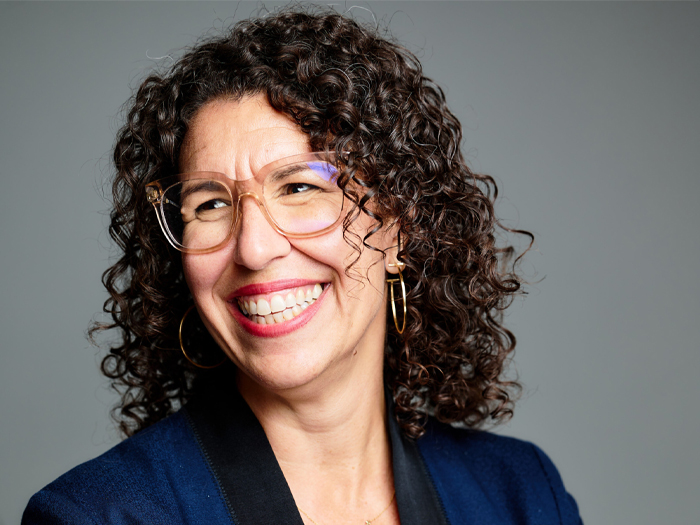The Insurance Communicators: 9 Questions for Kristy Sands

The professionals that focus on communications, public relations and marketing in the insurance industry perform a vital function. They’re the ones that build needed bridges between the industry, the media, policyholders and other key players.
It’s possible that insurance will never be fully understood by significant portions of the public and private sectors. But that doesn’t mean these communications professionals don’t keep trying!
In this new series from Risk & Insurance, we interview public relations and media relations professionals who have spent a significant portion of their professional lives in the insurance space. The goal of the series is to give the industry and the world at large a better idea of the important work these professionals do.
In this installment, we talk to Kristy Sands, vice president of communications and culture with Gallagher Bassett.
Risk & Insurance: What was your first job in the communications field?
Kristy Sands: I had a formative experience in the news department at KDKA-TV2 in Pittsburgh. As an associate producer for the weekend news show, I was able to influence programming by crafting thoughtful questions for the talent and experts while prioritizing the order and content of the news segments.
I gave editorial insights into what would be important to my generation as we broke news on the first Gulf War, navigated the switchboard when 2 Live Crew was on a national talk show, and determined the most effective way to communicate with varied audience segments in ways that resonated with them and kept them tuned into programming. The experiences I had there have had a lasting impact throughout my career.
R&I: How did you get started working in the insurance sector?
KS: I began my career in insurance as a liability claims adjuster. I went to a four-week training class where I learned the fundamentals of the claims business. While concepts of managing claims costs and risk at the desk level still hold relatively true, what’s changed dramatically is the availability and consumability of data.
It’s been exciting to see how data has supported what insurance professionals have known all along: Risk assessment and mitigation deserves a seat at the strategic table. Now, we get to help risk managers shape their story and demonstrate value to their organization.
R&I: You have spent a lot of time in the sector. How do you think the industry could do a better job of telling its story to the public?
KS: One way we tell stories at Gallagher Bassett is through awards and recognition. This year, two of Gallagher Bassett’s clients won Teddy Awards for their innovative and creative approach to addressing challenges in their WC programs. While the data verified that they achieved their goals, we dug into the details about what motivated them to make changes to serve their injured workers in a meaningful way.
By sharing the story of our partnership, we hope to inspire other organizations to attack their challenges with the same drive and creativity. Those signature stories become our collective story, to be told and retold. Through them, we create the narrative of what we can achieve through our profession.
R&I: What are some common communications mistakes you see being made in the sector?
KS: Every industry has unique communication challenges and has an opportunity to improve how they convey their message; the insurance industry is no different. One opportunity that comes to mind is the use of jargon and acronyms when communicating with those outside of our area of expertise. Speaking in terminology that our audience understands keeps the communication inclusive and allows them to focus on the expertise-based perspective we’re sharing.
R&I: How do you see artificial intelligence tools, ChatGPT and the like influencing not only how you work but your profession in general?
KS: For industry communicators, AI’s output could serve as a good starting point for ideation or efficiencies, but what’s generated shouldn’t be what lands in front of our audience.
While AI gets “smarter” with every entry, it doesn’t know our business and isn’t a substitute for the experience and context provided by a subject matter expert. As with most technology, care and responsibility must be taken to avoid potential risk and reputation issues.
R&I: In your mind, what separates a great PR professional from someone who’s merely competent or a placeholder?
KS: A great public relations professional is prepared and armed with knowledge of the business, the organization, and the brand. Having an inherent understanding of the business equips us to not only react to crisis but to proactively develop stories and amplify the voices that bring the organization and brand to life.
I’ve learned a lot from Kelli Murray, director of global media relations for Gallagher. She and her team are exceptional collaborative partners as we define our brand by the stories we tell.
R&I: What advice would you give to a young journalism or advertising or communications major who might benefit from a career in insurance?
KS: Insurance often isn’t the first industry students think of when considering their post-graduation plans. I was a communications major, and even though my father was in the industry, I hadn’t thought about how my communication skills would transfer to insurance.
However, there are many opportunities available for a long, varied and successful career. My advice — look at industry articles. Read about what’s happening in different segments to find opportunities that excite you.
Talk to a seasoned insurance communications professional and find out not only what drew them to their role, but more importantly, why they stay. Our insurance storytellers are the best ambassadors for the industry. Nothing gets us more excited than to attract the best and brightest to our field.
R&I: How important is mentoring to you?
KS: Mentoring in any industry is extraordinarily important, but it’s especially critical in insurance. Ours is a relationship business, and the mentor/mentee relationship might be the most fulfilling of them all.
Not only do I get to share my experience and institutional knowledge with my mentee so she can navigate her professional challenges, she’s encouraged me to explore new technology and platforms. The creative energy and solutions we generate as a team and the support we give each other lifts us both.
R&I: What has given you the greatest satisfaction in your career so far?
KS: Every year, I get to connect with Gallagher Bassett’s “Everyday Heroes,” our most accomplished claims operation colleagues. On what’s touted as the “best day of the year” at GB, our resolution managers and claims supervisors share their stories with our North America leadership team in a “TED Talk” format.
Over the years, we’ve been inspired by stories of how our colleagues have helped save the lives of injured workers with care and compassion, how they’ve overcome challenges with professionalism, grit and drive, and how they innovate with clients to solve problems, leading to great outcomes and fortified partnerships.
Many of these honorees have catapulted into new careers within Gallagher Bassett following the honors. Helping to shape their — and our — story is the most rewarding part of my role. Best job at Gallagher Bassett by a mile. &










